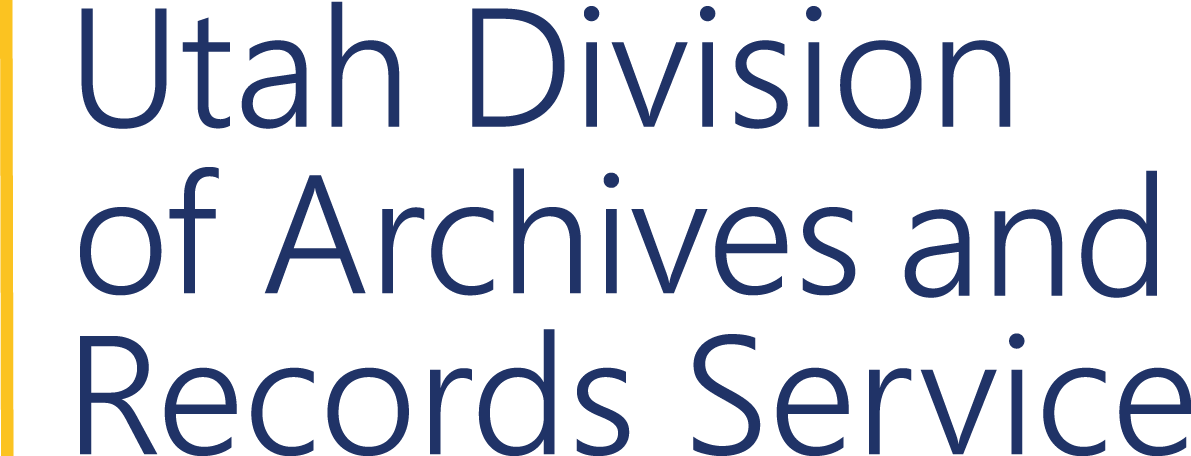Getting Started: A Guide for New Records Officers
You’ve been appointed by your director to be the records officer for your agency.
Here’s what you need to know.
1. State Archives RIM Specialist
You and your agency have a RIM (Records and Information Management) Specialist at State Archives to help you. Find out who your RIM specialist is at https://archives.utah.gov/rim/records-analysts.html
2. Certification
As a records officer, you need to be certified, according to the law (Utah Code 63G-2-108). To certify, you’ll take an online test. There are two tests available, one about Records Management, and one about Records Access (GRAMA). You only need to pass one test to certify. The study guides for the tests can be found at archives.utah.gov/rim/CSS/main.html
- You need a 75% on the test to pass.
- You may take the test as many times as you like.
- After the test, you’ll be able to see which questions you missed and what your answer was, but not the right answer. Contact your RIM Specialist if you would like help reviewing the questions you missed.
- Plan an hour or two to take the test the first time.
- You don't have to take the entire test in one sitting. The tests are divided into sections, so you can finish one section and come back later if needed.
3. Records and Information Management Training
You’ll need to know the basics of records and information management, like retention schedules, disposition, classification, etc. You can receive training on these topics by attending the State Archives training sessions, watching training sessions online, or reading the test study materials. We also provide in-agency training upon request.
- Upcoming Training
Archives Eventbrite Page
- Video trainings
archives.utah.gov/rim/training-videos.html
- Study materials for the tests
archives.utah.gov/rim/CSS/main.html
- Contact us for in-agency training or consultation
archives.utah.gov/rim/records-analysts.html
4. Records Access and Government Transparency
You may need to process record requests, or GRAMA requests, for your agency. The procedures for submitting and answering record requests are laid out in the Government Records Access and Management Act (GRAMA) (Utah Code 63G-2). The study materials and training videos listed above give an overview of this law and your responsibilities as a governmental entity. The State Archives also has tools and employees whose job is to help you with specific transparency- and GRAMA-related issues.
- If your responsibilities include posting public meeting notices and materials for a public body, you'll need to become familiar with the
Utah Public Notice Website, which is administered by the State Archives.
- The state has also created the Open Records Portal as a place for members of the public to submit GRAMA/record requests. You may log into the portal to manage and respond to requests submitted to your agency (you'll get an email if someone submits a request).
- The Public Notice Website and the Open Records Portal are administered by Dylan Mace, so contact him if you need help with either.
- Dylan Mace, Public Notice Website and Open Records Portal Administrator
dylanmace@utah.gov
801-531-3853
- Dylan Mace, Public Notice Website and Open Records Portal Administrator
- The state has an ombudsman to help with records request disputes or issues—for example, if a requester makes a very large or vague request, or if a requester is upset with an agency's response. Our government records ombudsman is Rosemary Cundiff.
- Monica Minaya, Government Records Ombudsman
mminaya@utah.gov
801-531-3858
- Monica Minaya, Government Records Ombudsman
5. What’s Already Been Done / Your Agency’s Records
It’s likely that your agency has already set up some retention schedules and reported some of its record series to the State Archives. Your agency may also have boxes stored off-site at the Records Center in Clearfield, or microfilm copies preserved at the State Archives. Finding out what information already exists will help you be more efficient in the future.
- To view the retention schedules that the Archives has on file for your entity, go to archives.utah.gov/rim/retention-schedules.html
- For local entities:
- Select your entity type from the section titled "Local Retention Schedules & Ordinances"
- Find your entity
- For all entities:
- Type your entity’s name in the box that says “Search by agency name”
- Select your entity from the list
- Click the link that says "Retention and Classification Report" (you may need to scroll down to see this)
- For local entities:
- Secure offsite records storage of permanent and non-permanent paper records is available at the State Records Center in Clearfield. This service is offered free of charge and includes disposition: either the destruction of non-permanent records once they've met retention (with your authorization), or the transfer of permanent records to the State Archives once they've met retention.
- Your entity still owns the records you store at the State Records Center
- You can recall records from the Records Center to your office at any time
- For a list of boxes stored by your entity in the Records Center, contact your RIM Specialist or the State Records Center staff. The box list will only show a summary of box contents; your entity should have more detailed information in your office.
- Lisa Catano, Records Center Manager
lcatano@utah.gov
801-525-3020
- Lisa Catano, Records Center Manager
- Reformatting of records from microfilm to digital or paper to microfilm is available at low cost. To view the microfilm holdings at the State Archives for your entity’s records, go to archives.utah.gov/rim/retention-schedules.html
- Type in your entity’s name in the box that says “Search by agency name”
- Select your entity from the list
- Click the link under “Microfilm List” that says PDF
And That’s It!
That’s a lot to think about, but please know that you are not alone. Records and Information Management is a team effort with a lot of moving parts, and should be taken one step at a time. Start with certification and figuring out where your agency is in the process.
Have any questions? Contact your RIM Specialist for assistance.

Page Last Updated December 26, 2023 .
